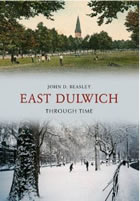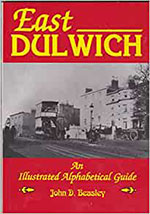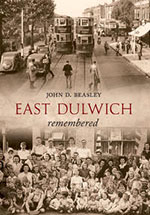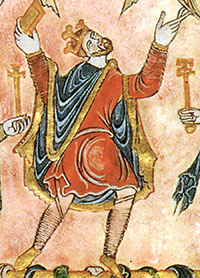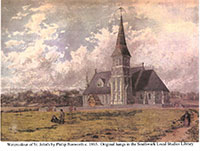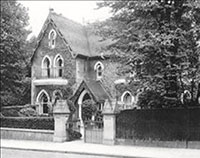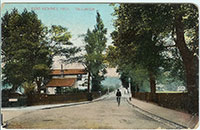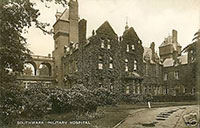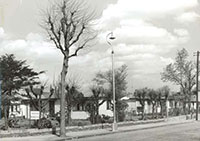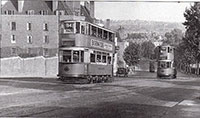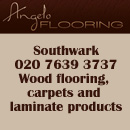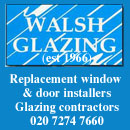A Timeline History of East Dulwich
A timeline history of East Dulwich illustrated with prints, photographs and maps (click on images to enlarge).
East Dulwich was originally in the county of Surrey. It is a classic example of a late Victorian suburb.
Saxon Dulwich
Dilwihs meant 'meadow where the dill grew’.
967 Edgar the Peaceful (c.933-975) granted Dilwihs to a thane, Earl Aelfheah.
Medieval Dulwich
1127 Dulwich given to Bermondsey Abbey by Henry II.
1333 Dulwich's Population: 100.
Lordship Lane the boundary between Dulwich manor and Friern Manor.
Tudor Dulwich
1538 After Dissolution of Monasteries Dulwich was seized by the Crown.
1544 Manor of Dulwich sold to goldsmith Thomas Calton by Henry VIII for £609.
1586 Thomas Calton died & Estate passed to his 10-year old grandson Francis Calton, who later became Lord Mayor of London.
Stuart Dulwich
1605 After some bad investments, Francis Calton sold Dulwich estate to the actor/manger Edward Alleyn (1566-1626).
Georgian Dulwich
1725 Friern Manor farm house built
1739 Spa set-up by a Mr Cox the owner of the Green Man (located on corner of Lordship Lane & Dulwich Common)
1740s Cox’s Walk cut to link Dulwich Spa with Sydenham Wells.
1799-1801 Byron attended Dr Glennie's Academy (previously The Green Man).
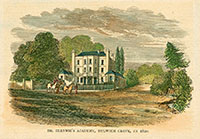
1803 Samuel Matthews, The Dulwich Hermit, murdered in Dulwich Woods.
1805 (+) Dulwich Common enclosed.
Regency East Dulwich
1814 More enclosures on Dulwich Common.
c1825 Dr Glennie's Academy closed.
Replaced by Bew’s Tea Garden (and later Grove Tavern).
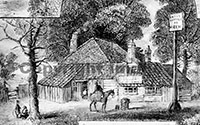
1826 East Dulwich Chapel built at start of Lordship Lane opposite Goose Green.
Early Victorian Dulwich
1851 Dulwich's population: 1,632
1853 Friern Manor Dairy Farm described in The Illustrated London News as “one of the largest dairy farms of the metropolis”.
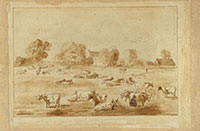
1855 Old Camberwell Cemetery opened on Forest Hill Road.
Mid Victorian Dulwich
1860s Stanford’s Map of London (East Dulwich section) pre-railway.
1863 Dr Glennie's Academy rebuilt as The Grove Tavern
1864 Frogley Road & Nutfield Road built with flat roofed houses.
Friern Manor sold to property company.
1865 St John's Church built on Goose Green. Designed by Charles Baily (1815-1878).
Lordship Lane Railway Station opened near to Wood Vale (it ran to Crystal Palace).
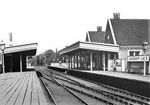
1866 Ezekiel James (EJ) Bailey (1829-1899) become the licensee of the Lord Palmerston.
Underhill Road named after John Underhill bishop of Oxford.
1867 Crystal Palace Road named after Exhibition moved to Sydenham.
Upland road named after a field on Friern Manor Farm Estate.
1868 Champion Hill Station (later East Dulwich station) opened.
Friern Road named.
Goose Green saved as an open space.
1871 EJ Bailey purchased a field opposite the Lord Palmerston and built Ashbourne Grove, Chesterfield Grove and part of Melbourne Grove (Bailey called it Dulwich Wood estate).
Archdale Road built.
1872 St John's & St Clements school moved to corner of Archdale Road & North Cross Road.
1873 Concrete house built at 549 Lordship Lane by Charles Drake of the Patent Concrete Building Company. 1920s photo.Friern Manor farm closed.
1874 St Peter's Church opened on corner of Lordship Lane & Dulwich Common. Designed by Charles Barry Junior (1823–1900). Redundant as of 1984.
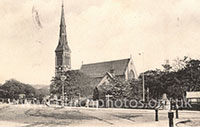
EJ Bailey bought land between East Dulwich Grove and Grove Vale. Called it the Grove Vale Estate.
1879 East Dulwich Grove extended to Dulwich Village.
Late Victorian East Dulwich
1880 Around 400 houses built on the Grove Vale Estate
1881 East Dulwich Road named.
1882 Heber Road Primary School opened. Designed by Edward Robert Robson (1836 -1917).
1884 North Cross Road named
1885 St Clement’s Church opened on Barry Road
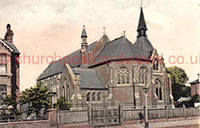
Postcard of Dog Kennel Hill pre-tram
1887 St Saviour's Union Infirmary (later Dulwich Hospital) opened on East Dulwich Grove. Designed by Henry Jarvis (1816-1900) & Son. The infirmary was constructed with a pavilion layout: a large administrative block with two wings was flanked on either side by a pair of three-storey wards in the Florence Nightingale style. The twenty four wards contained 26-30 beds along with a two-bed isolation ward. Earlier Mr E. J. Bailey said that he would only sell the land on condition that a public building only should be erected thereupon and the elevation thereof should be of an ornamental character. (Renamed Southwark Union Infirmary in 1902, Southwark Hospital in 1921 & Dulwich Hospital in 1930).
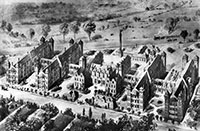
Alleyn's School relocated to Townley Road as a lower school for Dulwich College.
Actor Boris Karloff born at 36 Forest Hill Road.
1888 Champion Hill station renamed East Dulwich station.
1890 Dulwich Park opened between East Dulwich and Dulwich Village on Court Farm site.
Dulwich Grove Congregational Church opened on Melbourne Grove.
1891 Emmanuel Congregational Church opened on Barry Road. Replaced an earlier iron structure. Now deconsecrated.
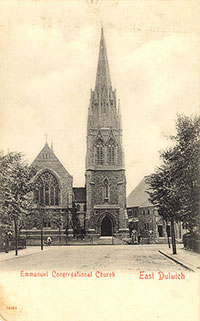
1892 Dulwich Baths opened on East Dulwich Road.
1893 Dulwich Hamlet FC formed. First ground Woodwarde Road then College Farm & on to Sunray Avenue.
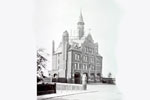
Dulwich Fire Station opened (closed 1947 after war damage).
1895 Camberwell Union Workhouse opened on Constance Road (now St Francis Road). Designed by Thomas Aldwinckle (1845-1920). The site housed 1,000 inmates, mostly aged and infirm, plus some mental patients (1914 known as the Constance Road Institution & 1930 St Francis Hospital).
1896 St James' (Church of Scotland) opened on East Dulwich Road (closed in 1972 & replaced by 49a St James' Cloister housing).
1897 Dulwich Library opened on Lordship Lane.
Children’s author Enid Blyton born at 354 Lordship Lane (house destroyed in WW2).
Edwardian Dulwich
1900 East Dulwich part of the borough of Camberwell.
Grove Vale School opened.
Dulwich's Population: 10,247
1902 Imperial Hall opened as a public hall at 72 Grove Vale next to Primary School. built by James William Brooker (1853-1904).
1906 Tram line (electric) built from Camberwell to Dulwich Library.
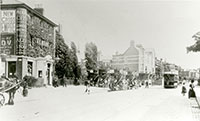
1908 Bartholomew's Atlas Of London & Suburbs (map of East Dulwich)
Epiphany Mission opened in Bassano Street for worship. Architects: Nixon Horsfield & Sons.
1910 Imperial Hall converted into a full time cinema.
Colour-tinted postcard of Lordship Lane

1911 CS Forrester moved to 58 Underhill Road with his family. Attended Alleyn’s School.
1912 Dulwich Hamlet FC moved to Freeman's Ground on Champion Hill.
Aquarius Golf Club opened.
East Dulwich in WWII
c. 1914-1918 Photo of Southwark Military Hospital (Dulwich Hospital)
Inter War East Dulwich
1919 Alleyn's became a public school.
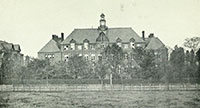
1923 Imperial Hall cinema in Grove Vale refurbished & re-named Pavilion Cinema.
Grove Tavern rebuilt in Mock Tudor roadhouse style.
1931 New Dulwich Hamlet FC stadium opened on Champion Hill.
1935 Pavilion Cinema closed.
1936 New Pavilion Cinema built.
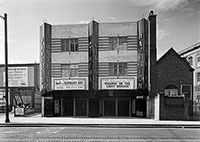
1939 Pavilion Cinema became an Odeon.
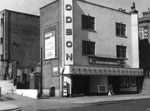
1940 German bombers blitzed London.
1944 V1 & V2 flying bombs caused widespread damage & loss of live.
Sat 5 August: Co-op in Lordship Lane hit by a VI flying bomb & 23 people killed.
Post War Dulwich
Many prefabs built for emergency housing
1949 Photo of old Dulwich Hamlet Football Club ground (1931-1991).
1952 Electric trams replaced by buses.
1958 New St Clement’s Church built off Barry Road (old church destroyed in WW2).
1965 East Dulwich became part of new borough of Southwark.
1966-72 Dawson Heights built by Southwark Council Overhill Road. Architect: Kate Macintosh (b.1937).
1972 East Dulwich Odeon closed.
1977 New East Dulwich Police Station opened at 173-183 Lordship Lane. Ir replaced the Victorian police station at 97 Crystal Palace Road.
1991 St Francis Hospital closed and later demolished (1993).
Dulwich Hamlet FC stadium demolished and new stadium built.
1992 Sainsbury’s supermarket built on Dulwich Hamlet FC training pitch.
1993 St Francis Park opened on Dog Kennel Hill.
Gentrification of East Dulwich began with new cafes and shops on North Cross Road.
1994 St John's & St Clements school moved to Adys Road.
2003 London House on Grove Vale (old East Dulwich Odeon) demolished.
2004 Dulwich Hospital closed on East Dulwich Grove.
2005 Dulwich Hospital closed apart from primary care.
2012 East Dulwich Police Station at 173-183 Lordship Lane closed.
2014 Harris Primary Academy opened on site of police station.
2015 East Dulwich Picturehouse (three-screen cinema, café and bar) opened.
2019 Charter School East Dulwich opened on part of site of Dulwich Hospital. Built by Kier Construction.
Bibliography:
The Story of Dulwich - Mary Boast (London Borough of Southwark 1975)
East Dulwich - John D Beasley (South Riding Press 2001)
Dulwich: A History - Brian Green (2002)
Dulwich Park: A Park for the People for Ever- Liz Johnson (2005)
More South London History Timelines
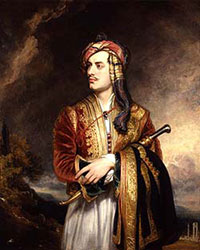
Lord Byron
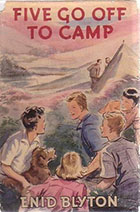
Enid Blyton

CS Forester

Boris Karloff
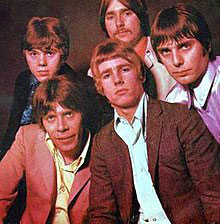
Status Quo


